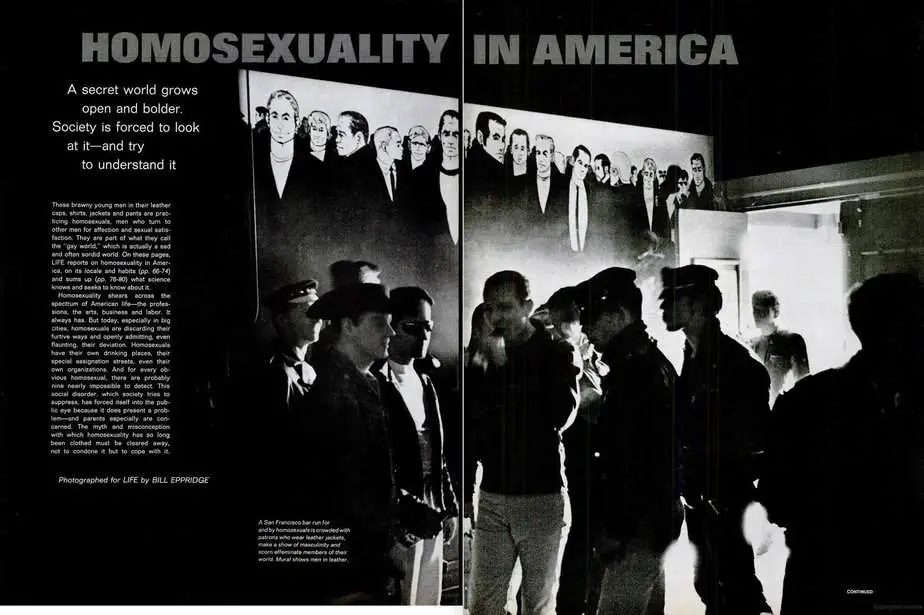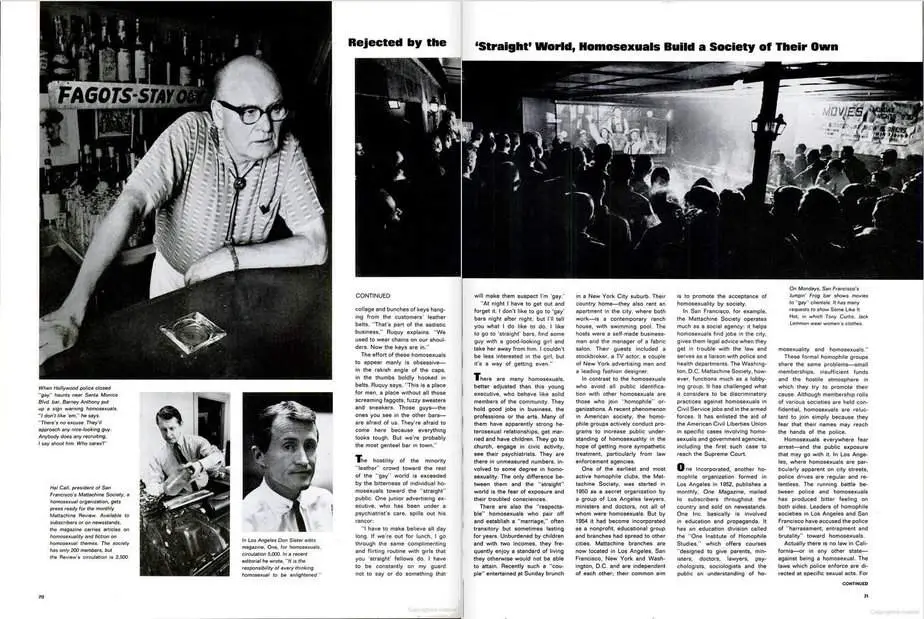It all began with the pioneers. San Francisco originated as an open frontier with a somewhat anarchic mentality, drawing thousands of immigrants to California for its Gold Rush. Alamilla Boyd in “Wide-Open Town” writes that “from its earliest days, sex and lawlessness have been fundamental to San Francisco’s character.” The Gold Rush (which hit a climax in 1849), transformed San Francisco into a vibrant and opulent city with a reputation for “licentious entertainment and vigilante government.” An estimated ninety-five percent of the population were male. Due to such disproportion in gender, many naturally assumed roles conventionally assigned to women were taken on by men. Same-sex dances, which may have appeared taboo to some cultures, became a staple of the Gold Rush Era. A minority of the few female occupants similarly felt more comfortable deviating from their gender, frequently dressing in masculine clothing. This inclination towards sexually permissive behavior laid a strong foundation for the city’s future social movements.
By World War I, the United States Navy had implemented a “blue discharge” which released known homosexuals in port cities, many of whom decided to stay local rather than face their families. Thus, a defined gay community was created in San Francisco. Other densely populated port cities (such as Los Angeles and New York City) similarly saw an increase in visibility. Governmental policies which attempted to discriminate ultimately provided a more acute sense of sexuality and new awareness of fellow homosexuals. John D’Emilio, author of “Sexual Politics, Sexual Communities” explains that the “unusual conditions of a mobilized society allowed homosexual desire to be expressed more easily in action.” Yet, it was the radical, liberal environment that separated San Francisco from any other city. These conditions gradually built momentum towards the LGBTQ movement many people are familiar with today.
Perhaps the most significant event that allowed San Francisco to claim its reputation was the publication of a 1964 LIFE Magazine piece titled “Homosexuality In America.” In it, Bill Eppridge photographed underground gay communities around the United States, documenting them as “something society is forced to look at —and try to understand…” With much disdain, LIFE painted the community as a “sad and often sordid world” whereas “homosexuals are discarding their furtive ways and openly admitting, even flaunting, their deviation.” A related LIFE article titled “Gay San Francisco” declared the city as “the gay capital of America” precipitating a strong cultural connection between homosexuality and the city. Although these candid portrayals of homosexual activity are outdated, they ultimately put San Francisco on the map. If it were not for the exposure from these articles, the “gay capital of America” could have easily been any other metropolis.
One might be tempted to think that the stars aligned for San Francisco; that the city was predisposed to liberation. That is not the case at all. What made San Francisco gay? The people.
// Feature photo by Piotr Musioł. Want to submit a story around your Pride? Email us, let’s chat!

